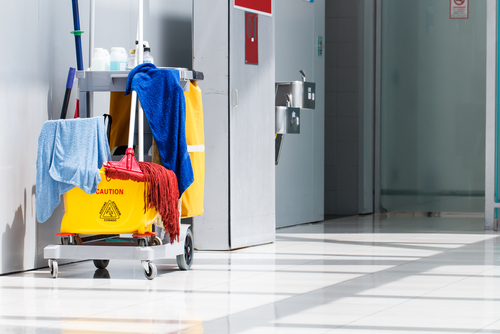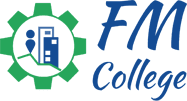How to Streamline Your Facility’s Cleaning Schedule Without Cutting Corners
While maintaining a spotless facility is crucial for promoting health, safety, and professionalism, balancing thorough cleaning with efficiency can be a difficult task. Comprehensive cleaning often demands significant time and resources, which can strain budgets and disrupt daily operations.

In this article, we will explore practical strategies to streamline your facility’s cleaning schedule while maintaining hygiene and safety standards and reinforcing trust and confidence in your operations.
1. Assess Your Current Cleaning Process
This is the starting point in streamlining your facility’s cleaning schedule.
Conduct a Cleaning Audit
Begin by reviewing the current cleaning practices and documenting each step of the process.
- Identify inefficiencies such as duplicate efforts, unnecessary tasks, or time-consuming methods that provide minimal benefit.
- Assess problem areas that are consistently overlooked or not cleaned to the required standards.
- Identify blind spots, such as high-traffic zones, shared spaces, and equipment that may require more frequent cleaning but often get neglected.
- Gather input from cleaning staff and facility users for valuable insights into pain points and areas that need improvement.
By pinpointing redundancies and inefficiencies, you can create a clearer picture of where adjustments are needed to streamline your cleaning efforts.
Analyze Time Allocation and Service Frequency
Once a cleaning audit is complete, the next step is to analyze the time spent on each task and determine if certain areas are over- or under-serviced. Break down the cleaning schedule into individual tasks and record the average time dedicated to each one.
- Evaluate whether resources are being used efficiently. For example, low-traffic areas may not need daily cleaning, whereas high-touch surfaces and frequently used spaces might require more frequent attention.
- Identify tasks that consume disproportionate amounts of time without significant impact on cleanliness or safety.
- Assess whether crucial areas are receiving the necessary level of cleaning. For example, restrooms or shared equipment may need more attention to meet hygiene standards.
By addressing these imbalances, you can reallocate time and resources more effectively, ensuring that the cleaning schedule is both efficient and comprehensive.
2. Prioritize Cleaning Tasks by Frequency and Importance
Streamline your facility’s cleaning schedule for maximum efficiency.
High-Priority Areas
- Restrooms require constant attention, as they are prone to harboring bacteria and viruses, making thorough cleaning and regular disinfection essential.
- Kitchens also demand frequent care, as food preparation surfaces can quickly become a breeding ground for contaminants such as mold and bacteria and kitchens pose an increased risk of fire, if not properly maintained.
- High-touch surfaces, such as door handles, light switches, and shared equipment, are hot spots for germ transmission and should be cleaned multiple times throughout the day.
High-priority areas may need cleaning multiple times per day.
Medium-Priority Areas
- Conference rooms should be cleaned to remove dust, debris, and any germs left behind from meetings.
- Break areas need consistent upkeep to address spills, food crumbs, and shared surfaces that can harbor bacteria.
- Hallways accumulate dirt and dust over time, but generally require less intensive cleaning than other areas.
Medium-priority areas may require daily or weekly cleaning depending on usage.
Low-Priority Areas
- Storage rooms, unused offices, archive spaces, and other lesser-used spaces may see minimal foot traffic and are not as prone to accumulating dirt, germs, or debris. However, occasional maintenance is important to prevent neglect and ensure they remain functional.
For low-priority areas, monthly or bi-weekly cleaning is typically sufficient, focusing on dust removal, cobweb clearance, and ensuring they remain organized.
3. Implement Smart Scheduling and Task Rotation
This is key to ensuring all areas are maintained appropriately while adapting to specific needs or unexpected changes. Below is an example framework for a cleaning schedule that can be adjusted based on your facility’s size, workforce, and activity patterns.
Daily Cleaning Tasks
High-Priority Areas:
- Clean and sanitize restrooms multiple times per day to prevent germ buildup.
- Wipe down kitchen surfaces, disinfect communal appliances, and empty trash bins.
- Perform touchpoint cleaning for frequently used surfaces such as doorknobs, light switches, and elevator buttons.
Medium-Priority Areas:
- Tidy conference rooms after meetings, removing trash and wiping down tables and chairs.
- Clean and organize break areas, including disinfecting shared equipment like microwaves and coffee machines.
- Vacuum or sweep hallways to keep them presentable.
Weekly Cleaning Tasks
- Conduct a more thorough cleaning of medium-priority areas, addressing hidden spots that may not receive daily attention.
- Clean windows, both indoor and outdoor, in common spaces.
- Deep-clean upholstery and carpets in high-traffic areas to extend their lifespan and remove embedded dirt.
Monthly Cleaning Tasks
- Inspect and clean low-priority areas.
- Perform maintenance cleaning for less noticeable areas like baseboards, ceiling fans, and air vents.
- Review and update the cleaning schedule based on any changes in usage patterns or priorities.
By sticking to this schedule while remaining flexible to adjust for unforeseen events, you can maintain cleanliness across all zones without overburdening your cleaning staff.
Rotate Deep-Cleaning Tasks to Prevent Burnout
To avoid overburdening specific team members and ensure consistent cleaning quality, establish a rotation schedule that assigns different responsibilities each week or month, allowing everyone to share the workload equitably.
For example, one team member could focus on upholstery and carpet cleaning, while another handles windows and air vents. Regularly rotating these roles not only prevents physical and mental fatigue but also fosters a sense of teamwork and shared responsibility.
Additionally, cross-training staff members on various tasks ensures that the team is well-prepared to handle any cleaning challenges.
4. Equip Your Team with the Right Tools and Supplies
Investing in quality cleaning supplies and equipment is crucial for maintaining a healthy work environment. The following tools and supplies not only make the cleaning process more efficient but also contribute to better results:
- Microfiber cloths for dusting and wiping surfaces without leaving streaks or lint.
- Mops with interchangeable heads for different floor types and tasks.
- High-quality vacuum cleaners with HEPA filters for effective dust removal.
- All-purpose cleaners that are safe for various surfaces, such as countertops, glass, and floors. A self-cleaning surface protection coating can help prevent the buildup of contaminants.
- Disinfectants specifically designed to kill germs on high-touch areas like doorknobs, light switches, and keyboards.
Equipping your team with the right tools and supplies not only makes their job easier but also ensures a safer and healthier workspace for everyone.
5. Train Staff for Speed and Effectiveness
To maximize efficiency, it’s important to conduct regular training sessions focused on time-saving cleaning techniques. These trainings should emphasize strategies such as:
- Cleaning in a methodical top-to-bottom approach.
- Using tools like multi-surface cleaners to reduce the need for product changes.
- Employing ergonomic equipment to minimize fatigue.
Demonstrating proper tool usage and innovative methods, such as pre-soaking tough stains or using color-coded cloths to prevent cross-contamination, can significantly cut down cleaning time while maintaining high standards of hygiene.
Regular training not only improves the team’s effectiveness but also boosts their confidence and ensures consistency in cleaning practices across the workplace.
6. Establish Clear Guidelines for Consistency Across Shifts
This is essential to maintaining a high standard of hygiene and efficiency. Implement the following guidelines to ensure uniformity:
- Create a Standardized Cleaning Checklist: Outline the tasks to be completed during each shift. Include essential duties such as sanitizing high-touch areas, vacuuming or sweeping floors, emptying trash bins, and restocking supplies. Ensure the checklist is visible and accessible to all team members.
- Designate Specific Responsibilities: Assign roles and responsibilities clearly to team members at the start of each shift. This helps avoid confusion and ensures accountability for each task.
- Maintain a Log System: Team members can document completed tasks, report issues, or note areas requiring extra attention. This record serves as a communication tool between shifts and ensures continuity.
- Conduct Shift Overlap Meetings: Briefly overlapping shifts allows for key updates and ensures a smooth handoff. This practice enables staff to address any challenges and align on priorities for ongoing and upcoming tasks.
- Ensure Consistent Supply Stocking: Train each shift to replenish cleaning supplies before their shift ends, ensuring the next team has what they need to begin without delay.
By adhering to these guidelines, the cleaning routine will remain uniform, efficient, and effective, regardless of who is on duty. Consistency fosters professionalism and guarantees a tidy and healthy environment for everyone.
7. Leverage Technology for Cleaning Optimization
Technology can help optimize the efficiency and effectiveness of cleaning operations in the following ways:
- Automate cleaning schedules based on occupancy levels, foot traffic patterns, and other factors. This helps ensure that high-traffic areas receive more frequent cleaning while optimizing resources for less frequently used spaces.
- Leverage real-time monitoring using sensors or other monitoring systems to track foot traffic and occupancy levels in different areas of the facility. This data can help identify high-touch areas that require more frequent cleaning and enable staff to prioritize tasks accordingly.
- Smart cleaning equipment, such as self-cleaning mops and robots, can efficiently cover larger areas and reduce the workload for staff. This frees up time for them to focus on more detailed cleaning tasks.
Technology can also aid in tracking and monitoring cleaning procedures to ensure they are being carried out consistently and effectively across different shifts and team members.
Clean Smarter Without Cutting Corners
Facilities can streamline cleaning processes without cutting corners or sacrificing the quality of work. Adopting strategies and tools that enhance productivity, and focusing on smarter practices, enables organizations to achieve a balance where cleaning can be both meticulous and efficient.
Liz Whittaker, who serves as the CMO of TiCoat, is a marketing professional with an MBA from Columbia Business School and extensive experience across multiple industries.
The post How to Streamline Your Facility’s Cleaning Schedule Without Cutting Corners appeared first on Facilities Management Advisor.

